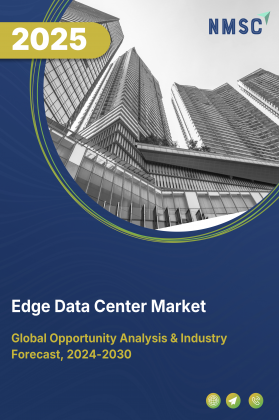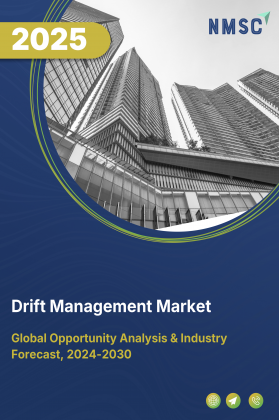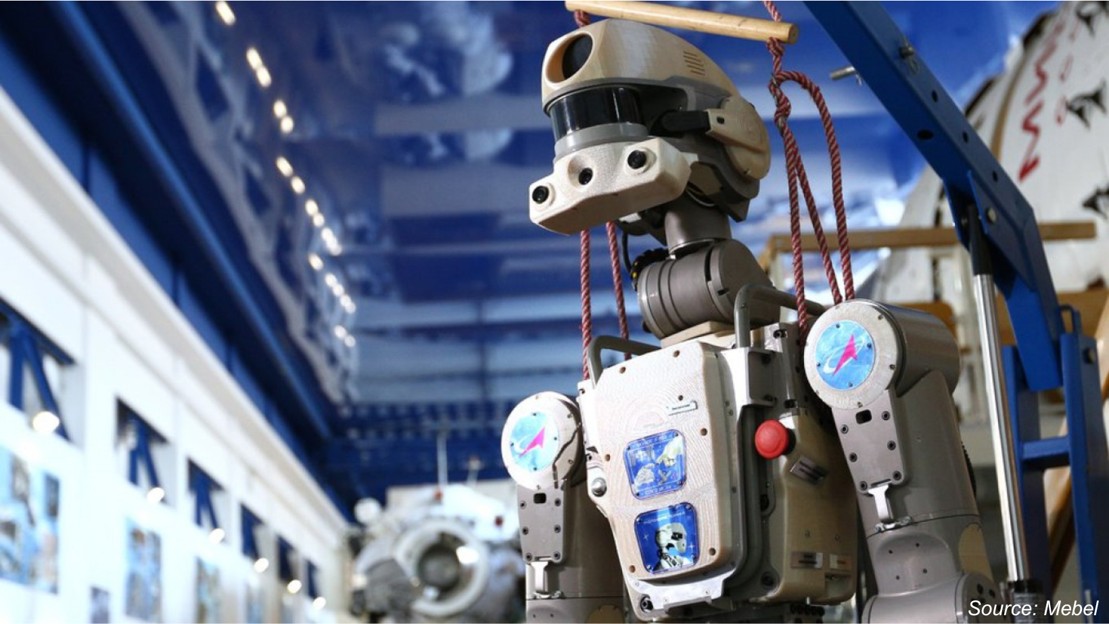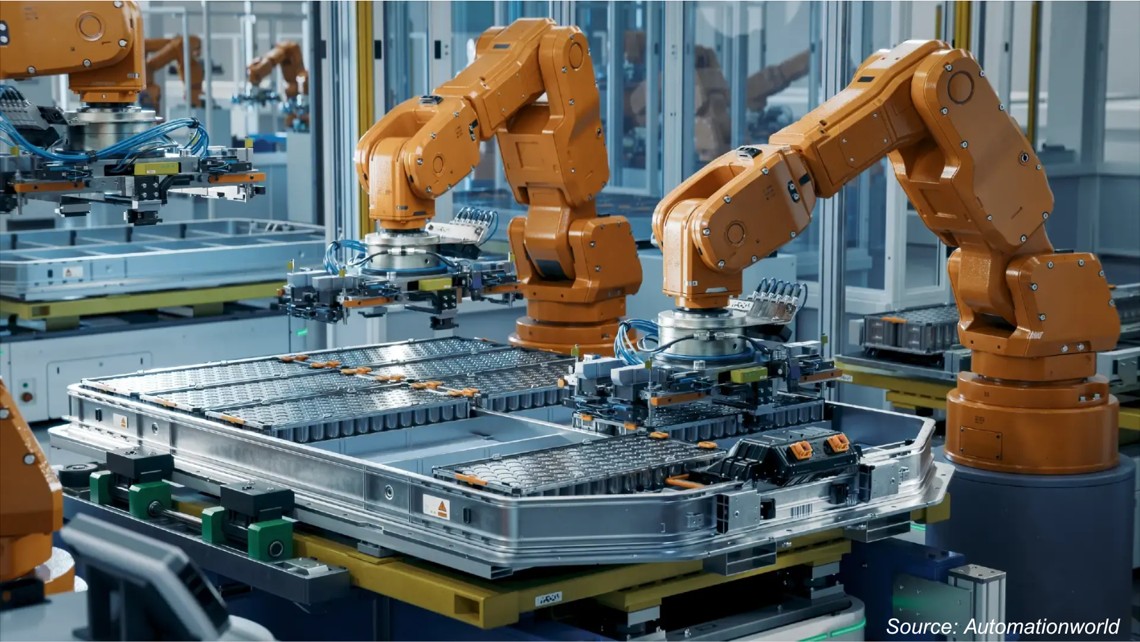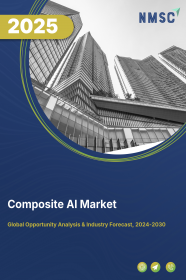
Composite AI Market by Component (Hardware, Software, and Service), by Process (Conditioned Monitoring, Pattern Recognition, Data Processing, Proactive Mechanism, Data Mining & Machine Learning, and Others), by Function (Product Design & Development, Quality Control, Maintenance & Support, Security & Surveillance, Supply Chain Management, Customer Service, and Others) and Others- Global Opportunity Analysis and Industry Forecast 2024-2030
Market Definition
The Composite AI Market size was valued at USD 0.97 billion in 2023 and is predicted to reach USD 8.16 billion by 2030 with a CAGR of 36.4% from 2024-2030.
Composite AI refers to an advanced artificial intelligence (AI) approach that combines multiple AI technologies, techniques, or models to create a comprehensive and robust AI system. Unlike traditional AI systems that rely on a single algorithm or model, composite AI integrates various AI components, such as machine learning, natural language processing, computer vision, and robotic process automation, to solve complex problems or tasks. By leveraging the strengths of different AI technologies, composite AI can offer more accurate predictions, better decision-making capabilities, and improved automation across diverse domains and applications.
Market Dynamics and Trends
The composite AI market is experiencing significant growth driven by the complexity of tasks that often involves multiple variables, uncertainties, and interdependencies. These challenges require sophisticated AI approaches capable of addressing multiple facets of a given task or challenge. Composite AI offers a unique solution by integrating multiple AI technologies, such as machine learning, natural language processing, computer vision, and robotic process automation, into a unified system. This holistic approach enables composite AI systems to tackle complex problems more effectively, leading to improved performance and outcomes.
Moreover, the increasing adoption of automation and digital transformation initiatives in various sectors has created fertile ground for the expansion of the composite AI market. Organizations are seeking AI solutions that can automate repetitive tasks, streamline processes, and enhance operational efficiency. Composite AI offers a comprehensive automation solution by integrating AI technologies with existing systems and workflows, enabling seamless collaboration between humans and machines. As businesses embrace digitalization and seek to leverage AI for competitive advantage, the demand for composite AI solutions is expected to rise.
Furthermore, the rapid advancement of AI technologies and the availability of large datasets have played a crucial role in driving the growth of the composite AI market. With the proliferation of data across different domains and industries, there is a growing need for AI systems capable of analyzing, interpreting, and deriving insights from diverse data sources. Composite AI leverages the power of machine learning algorithms and data analytics to process and extract valuable information from large datasets, enabling organizations to make informed decisions and drive innovation.
However, there is a scarcity of professionals who possess the diverse skill set required to develop and implement composite AI solutions effectively. The shortage of skilled talent limits the scalability and adoption of composite AI across industries, impeding market growth.
On the contrary, the emergence of edge computing offers new opportunities for deploying composite AI solutions at the network edge. Edge computing enables real-time processing and analysis of data in distributed environments, reducing latency, enhancing privacy, and enabling faster decision-making. Composite AI models can be deployed on edge devices, such as smartphones, IoT devices, and edge servers, to perform intelligent inference and decision-making locally, without relying on centralized cloud infrastructure. This distributed approach to AI enables responsive and scalable applications, opening up opportunities for composite AI to power a wide range of edge computing applications, from smart cities to autonomous vehicles.
Market Segmentation and Scope of Study
The global composite AI market is segmented on the basis of component, process, function, end user and geography. Based on component, the market is classified into hardware, software, and service. Based on the process, the market is segmented into conditioned monitoring, pattern recognition, data processing, proactive mechanism, data mining & machine learning, and others. On the basis of function, the market is categorized into product design & development, quality control, maintenance & support, security & surveillance, supply chain management, customer service, and others. On the basis of end user, the market is divided into finance, healthcare, government, logistics, automotive, manufacturing, and others. Geographical breakdown and analysis of each of the aforesaid classifications include regions comprising of North America, Europe, Asia-Pacific, and RoW.
Geographical Analysis
North America dominates the global composite AI market and is potently expected to remain dominant in the market throughout the forecast period. This is attributed to the, region's advanced technological landscape and the increasing adoption of AI-driven solutions across various industries. One significant driver is the robust investment and innovation ecosystem in North America, particularly in leading technology hubs such as Silicon Valley, Seattle, and Boston.
These regions are home to a dense concentration of AI startups, research institutions, and technology giants, fostering a fertile environment for the development and commercialization of composite AI solutions. The presence of top-tier talent, access to capital, and collaborative networks accelerates the pace of innovation and drives the adoption of composite AI technologies across industries.
Moreover, governments at the federal and state levels have implemented initiatives to promote AI research, development, and adoption, providing funding, incentives, and regulatory frameworks to support the growth of the AI ecosystem. These initiatives create an enabling environment for startups, scale-ups, and established companies to invest in Composite AI technologies and bring innovative solutions to market.
For instance, the U.S. National Science Foundation's launch of the National Artificial Intelligence Research Resource (NAIRR) pilot in January 2024 aims to democratize access to critical AI resources for researchers and educators. This initiative facilitates collaboration, accelerates innovation, and fuels the growth of composite AI in North America. Such government-led efforts reinforce the region's position as a global leader in AI innovation, contributing to economic growth and competitiveness.
On the other hand, Asia Pacific is witnessing significant growth in the composite AI market driven by the escalating demand for advanced automation and personalization across diverse industries such as automotive and robotics. Countries including China, Japan, and India are at the forefront of this surge.
For instance, in December 2021, China's Ministry of Industry and Information Technology, along with other key departments, released "The five-year development plan for the robotics industry in the 14th Five-year." This strategic initiative aims to guide and bolster the high-quality development of China's robotics sector, reflecting the region's commitment to embracing cutting-edge technologies including composite AI. Such governmental initiatives serve as catalysts for innovation and adoption, fostering a conducive environment for composite AI growth in the Asia Pacific region.
Additionally, Additionally, the availability of vast amounts of data in the Asia Pacific region is driving the development and deployment of Composite AI solutions. With the proliferation of connected devices, IoT sensors, and digital platforms, organizations have access to rich datasets that can be leveraged to train and refine AI models. This data abundance provides a fertile ground for the advancement of Composite AI technologies, enabling more accurate predictions and actionable insights.
Competitive Landscape
The composite AI market includes several market players such as Black Swan Technologies, Microsoft Corporation, SAS Institute Inc., Fujitsu Limited, Opentext Corporation, Dynatrace LLC., LeewayHertz, XenonStack's, Cascadeo, BMC Software, Inc., Oracle Corporation, Siemens AG, Google LLC, Amazon Web Services, Inc., Infosys Limited. These market players are adopting various strategies such as innovation and collaboration to maintain their dominance in the global composite AI market.
For instance, in January 2024, Microsoft Corp. unveiled groundbreaking generative AI and data solutions tailored for retailers, offering a comprehensive suite of capabilities to enhance every aspect of the retail shopping experience. These innovative solutions enable personalized shopping experiences, empower store associates, and optimize the utilization of retail data, ultimately enabling brands to better connect with their target audiences.
Also, in October 2023, IBM partnered with the National Aeronautics and Space Administration (NASA) to utilize IBM's advanced artificial intelligence (AI) technology for uncovering insights within NASA's Earth science data. This partnership underscores the potential of composite AI models to extract valuable insights from complex datasets, including those from satellite imagery and environmental observations.
Key Benefits
-
The composite AI market report provides the quantitative analysis of the current market and estimations through 2024-2030 that assists in identifying the prevailing market opportunities to capitalize on.
-
The study comprises a deep dive analysis of the composite AI market trend including the current and future trends for depicting the prevalent investment pockets in the market.
-
The information related to key drivers, restraints and opportunities and their impact on the composite AI market is provided in the report.
-
The competitive analysis of the market players along with their market share in the composite AI market
-
The SWOT analysis and Porters Five Forces model is elaborated in the study.
-
Value chain analysis in the market study provides a clear picture of the stakeholders’ roles.
Key Market Segments
By Component
-
Hardware
-
Software
-
Service
By Process
-
Conditioned Monitoring
-
Pattern Recognition
-
Data Processing
-
Proactive Mechanism
-
Data Mining & Machine Learning
-
Other
By Function
-
Product Design & Development
-
Quality Control
-
Maintenance & Support
-
Security & Surveillance
-
Supply Chain Management
-
Customer Service
-
Others
By End User
-
Finance
-
Healthcare
-
Government
-
Logistics
-
Automotive
-
Manufacturing
-
Others
By Region
-
North America
-
U.S
-
Canada
-
Mexico
-
-
Europe
-
UK
-
Germany
-
France
-
Italy
-
Spain
-
Denmark
-
Netherlands
-
Finland
-
Sweden
-
Norway
-
Russia
-
Rest of Europe
-
-
Asia-Pacific
-
China
-
Japan
-
India
-
South Korea
-
Australia
-
Indonesia
-
Singapore
-
Taiwan
-
Thailand
-
Rest of Asia-Pacific
-
-
Rest of the World (RoW)
-
Latin America
-
Middle East
-
Africa
-
REPORT SCOPE AND SEGMENTATION:
|
Parameters |
Details |
|
Market Size in 2023 |
USD 0.97 Billion |
|
Revenue Forecast in 2030 |
USD 8.16 Billion |
|
Revenue Growth Rate |
CAGR of 36.4% from 2024 to 2030 |
|
Analysis Period |
2023–2030 |
|
Base Year Considered |
2023 |
|
Forecast Period |
2024–2030 |
|
Market Size Estimation |
Billion (USD) |
|
Growth Factors |
|
|
Countries Covered |
28 |
|
Companies Profiled |
15 |
|
Market Share |
Available for 10 companies |
|
Customization Scope |
Free customization (equivalent up to 80 working hours of analysts) after purchase. Addition or alteration to country, regional, and segment scope. |
|
Pricing and Purchase Options |
Avail customized purchase options to meet your exact research needs. |
KEY PLAYERS
-
Black Swan Technologies
-
Microsoft Corporation
-
SAS Institute Inc.
-
Fujitsu Limited
-
Opentext Corporation
-
Dynatrace LLC.
-
LeewayHertz
-
XenonStack's
-
Cascadeo
-
BMC Software, Inc.
-
Oracle Corporation
-
Siemens AG
-
Google LLC
-
Amazon Web Services, Inc.
-
Infosys Limited




















 Speak to Our Analyst
Speak to Our Analyst




